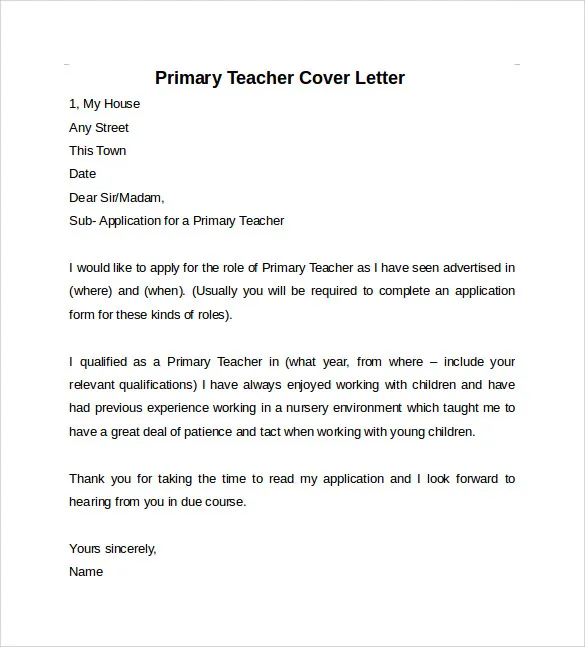Understanding the Importance of a Cover Letter for First Year Teachers
As a first-year teacher, the job market can seem daunting. With limited experience, it’s crucial to make a strong first impression. A well-crafted cover letter is your opportunity to shine, providing a personal touch that your resume alone can’t offer. It’s your chance to showcase your passion, skills, and unique perspective, setting you apart from other candidates. A compelling cover letter can significantly increase your chances of securing an interview and ultimately, landing your dream teaching position. This document is not merely a formality, but a powerful tool that can help you stand out from the crowd and leave a lasting impression on potential employers. The importance cannot be overstated, especially for those starting their careers in education.
Why a Cover Letter Matters
A cover letter allows you to tell your story in a way that a resume cannot. It provides context to your experiences and explains your motivations for pursuing a career in teaching. It’s an opportunity to demonstrate your personality, enthusiasm, and genuine interest in the specific school or district. It allows you to address any gaps in your resume, perhaps explaining a career change or a period of volunteer work. Also, it shows your communication skills, demonstrating your ability to write clearly and persuasively. In a competitive field like education, these qualities are invaluable. A well-written cover letter is a sign of professionalism and attention to detail. Recruiters often use cover letters to assess an applicant’s writing skills and gauge their suitability for a teaching role. A weak cover letter is a missed opportunity that can significantly hinder your chances of getting hired.
Highlighting Your Skills and Experiences
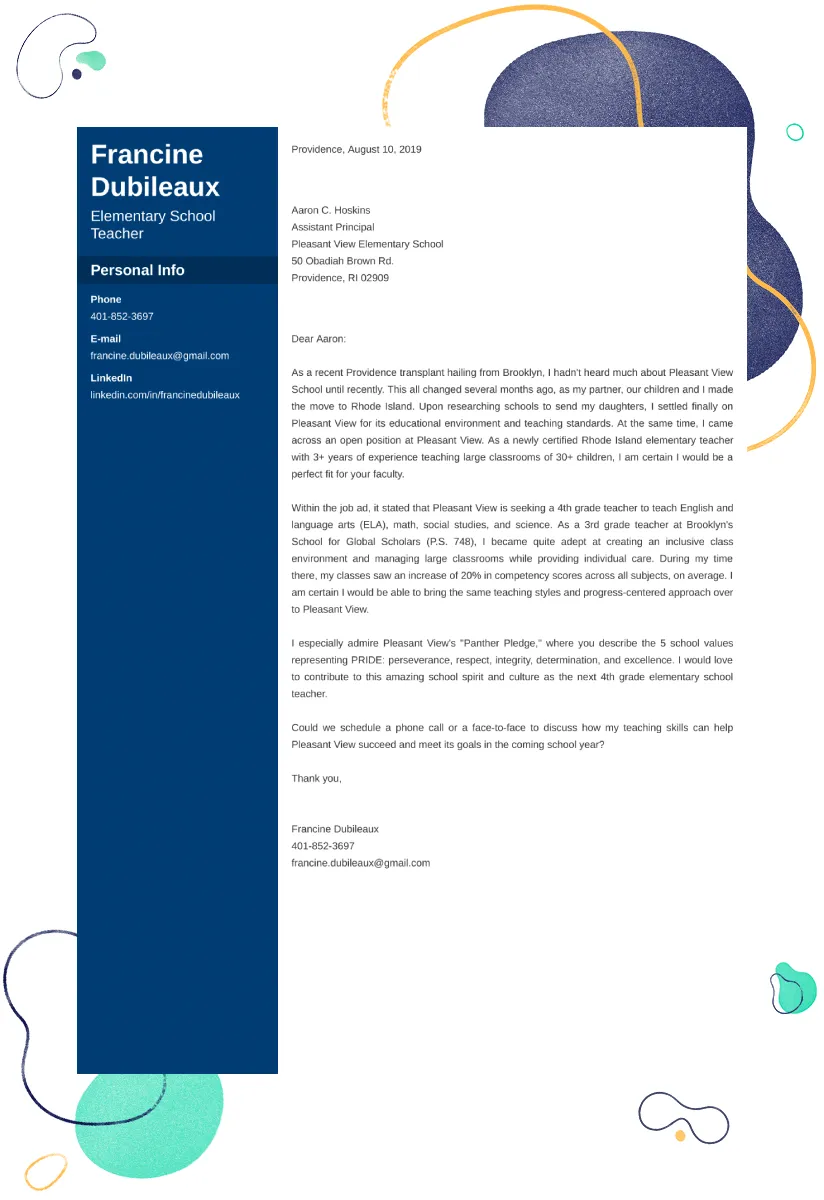
While your resume lists your qualifications, your cover letter is where you highlight the skills and experiences that make you a great fit for the role. Focus on the skills most relevant to the job description, such as classroom management, lesson planning, curriculum development, and communication. Use specific examples to illustrate these skills, such as how you successfully managed a challenging classroom or developed an engaging lesson plan. Quantify your achievements whenever possible, such as the percentage improvement in student test scores or the number of students you mentored. Emphasize any unique experiences or qualities that set you apart. The goal is to show, not just tell, the hiring manager why you are the perfect candidate for the position. By highlighting the relevant skills and experiences, you can create a strong impression and significantly improve your chances of securing an interview.
Key Components of a Winning Cover Letter for First Year Teachers
Header and Contact Information
Start with a professional header that includes your name, address, phone number, and email address. Make sure your email address is professional (e.g., john.doe@email.com) and not something informal or unprofessional. Include the date and the hiring manager’s name and title, if known, along with the school’s address. If you’re unsure of the hiring manager’s name, research the school’s website or call the school to inquire. Addressing your letter to a specific person makes it more personal and shows that you’ve taken the time to research the school. The header sets the tone of your letter and demonstrates your attention to detail, a crucial quality for any educator. Including all the necessary details in the header helps the hiring manager quickly identify you and easily contact you for an interview. Proper formatting and accuracy in this section create a positive first impression.
Addressing the Hiring Manager
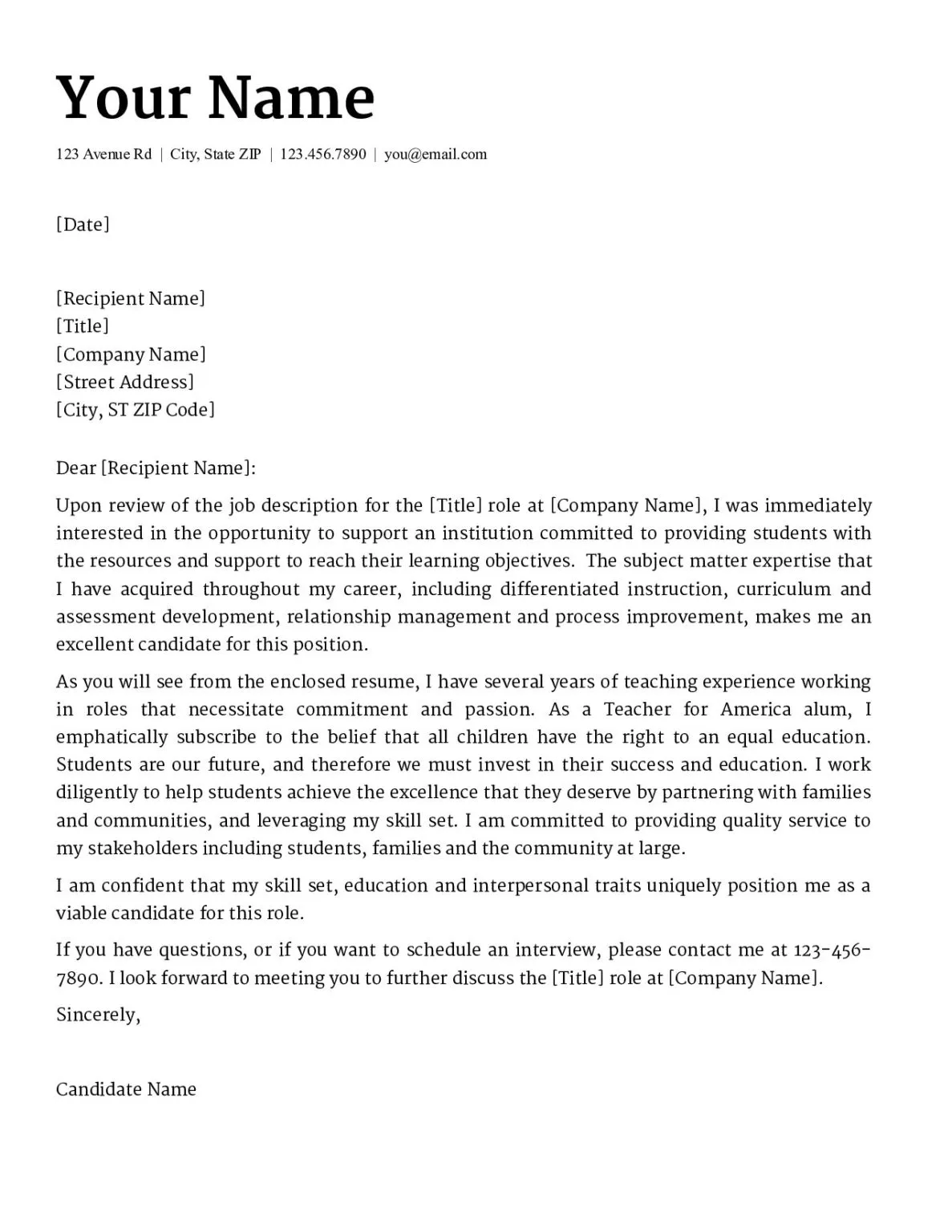
Always address the hiring manager by name whenever possible. This shows that you’ve taken the time to research the school and demonstrates a personal touch. If you can’t find the hiring manager’s name, use a professional greeting like “Dear Hiring Committee” or “Dear [School Name] Hiring Team.” Avoid generic greetings like “To Whom It May Concern,” which can make your letter feel impersonal. Using the hiring manager’s name makes your cover letter feel more like a personalized communication, which can make a significant difference in the reader’s perception of your application. Research the school’s website, LinkedIn, or other professional networking sites to find the appropriate contact person. A personalized greeting is a subtle but effective way to stand out from other applicants and capture the reader’s attention from the start.
Opening Paragraph Strategies
Your opening paragraph is your first chance to grab the hiring manager’s attention, so make it count. State the position you are applying for and where you found the job posting. Briefly explain why you’re interested in the specific school or district. Highlight your most relevant qualifications or a unique skill that makes you a great fit. For instance, if the school emphasizes project-based learning, you could start by mentioning your experience with this teaching methodology. Use an engaging hook to draw the reader in, such as a compelling anecdote about your passion for teaching or a specific achievement. Make sure the opening paragraph is concise, enthusiastic, and tailored to the specific job and school. A strong opening sets the tone for the rest of your cover letter and increases your chances of securing an interview.
Crafting a Compelling Body
The body of your cover letter is where you demonstrate how your skills and experience align with the job requirements. Use one or two paragraphs to elaborate on your qualifications, providing specific examples and quantifiable results. This is your opportunity to showcase your classroom management skills, lesson planning abilities, and any special skills you have. Reference the job description and tailor your examples to match the school’s needs. Show, don’t just tell, by using action verbs to describe your accomplishments. Emphasize your enthusiasm for teaching and your commitment to student success. Illustrate how you create a positive and engaging learning environment. The body of your cover letter should be a persuasive argument for why you are the best candidate for the position.
Showcasing Your Education and Certifications
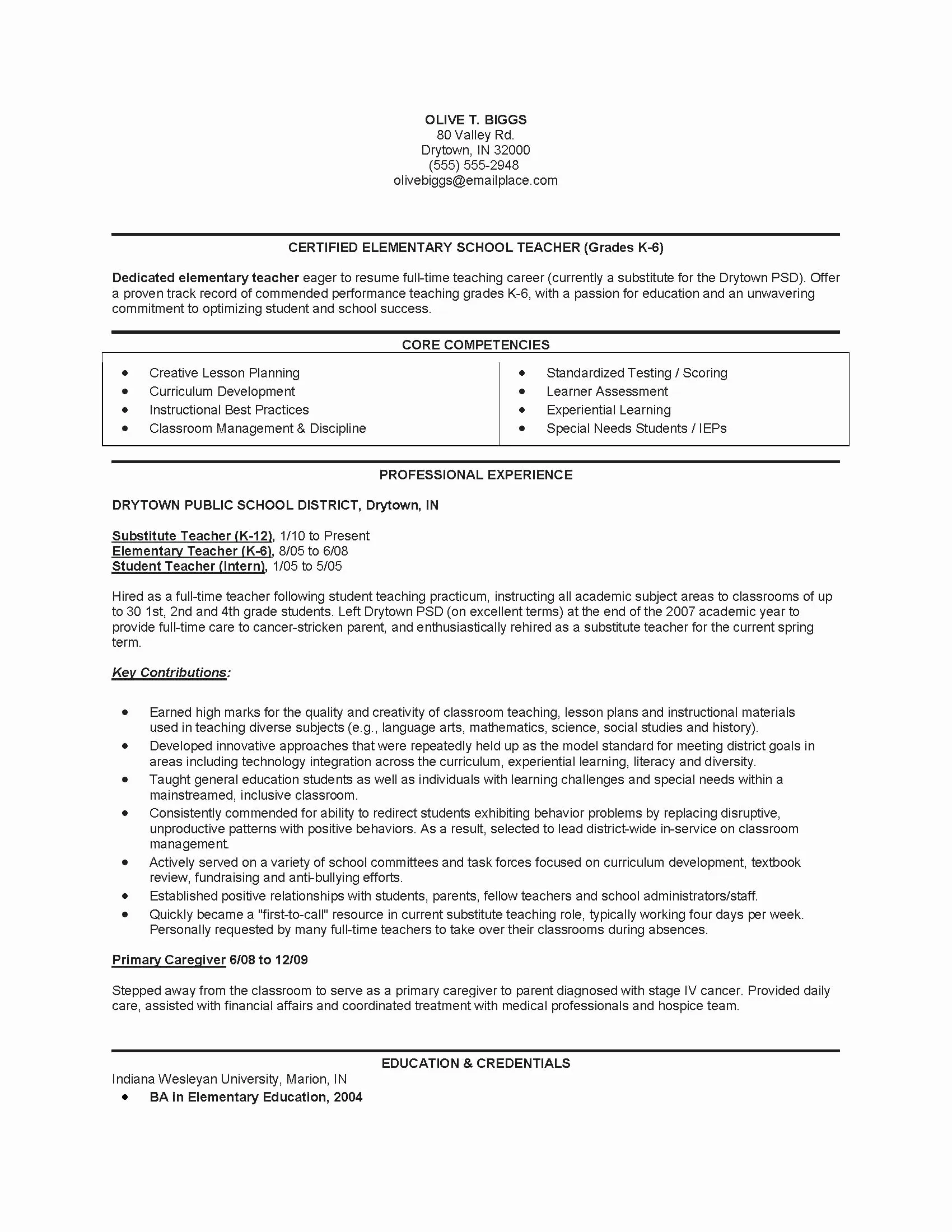
Clearly state your educational background and any relevant certifications. Mention your degree, the university you attended, and the date of your graduation. Specify your teaching certifications, including the subject areas and grade levels you are certified to teach. If you have any special endorsements or qualifications, be sure to include them. For example, if you are certified in special education or have a specific technology certification, list these as well. Highlight any academic achievements or honors you received during your education. This information helps the hiring manager quickly assess your qualifications and ensures that you meet the basic requirements for the position. Make sure all information is accurate and up-to-date, as this is a critical element of your credentials.
Highlighting Relevant Experience
Describe your teaching experience, including student teaching, internships, or any other relevant roles. Provide specific examples of your accomplishments and responsibilities. Quantify your achievements whenever possible; for example, state the number of students you taught or the percentage improvement in student test scores. Focus on experiences that align with the job description and school’s values. Even if you have limited experience, emphasize transferable skills and accomplishments from other roles, such as leadership experience from extracurricular activities or volunteer work. This section is a chance to show how you have applied your skills in real-world settings. Provide concrete examples of how you managed a classroom, planned lessons, and interacted with students and parents. Be clear, concise, and highlight your effectiveness in the classroom.
Demonstrating Passion for Teaching
Show your passion for teaching by highlighting your enthusiasm for the profession. Describe why you love teaching and what motivates you. Share your teaching philosophy, emphasizing your commitment to student success and creating a positive learning environment. Discuss any innovative teaching methods you employ or your experience with different student populations. Express your excitement about working with students and fostering their intellectual and personal growth. Illustrate how you are dedicated to lifelong learning and professional development. Your passion is what will resonate with the hiring manager and make you memorable. Let your enthusiasm shine through by sharing specific examples of how you have impacted students and contributed to their learning journeys.
Adding a Strong Closing
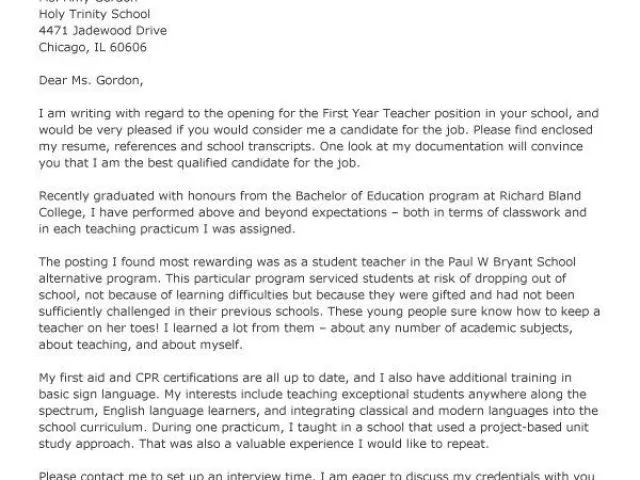
Your closing paragraph should reiterate your interest in the position and the school. Thank the hiring manager for their time and consideration. Reiterate your enthusiasm for the opportunity to contribute to their team. State your availability for an interview and provide any relevant contact information. A strong closing paragraph leaves a positive final impression. Express your confidence in your abilities and your eagerness to discuss how you can contribute to the school’s success. End on a positive and professional note, reinforcing your enthusiasm and commitment to the role. Make sure your closing paragraph is concise, professional, and leaves the hiring manager with a clear understanding of your interest and availability.
Formatting and Proofreading Your Cover Letter
Font and Formatting Guidelines
Choose a professional and easy-to-read font such as Times New Roman, Arial, or Calibri. Use a font size between 10 and 12 points. Ensure your letter is well-formatted with clear headings, bullet points, and consistent spacing. Use a standard 1-inch margin on all sides. Keep your cover letter to one page. A well-formatted cover letter is easier to read and demonstrates your attention to detail. Proper formatting also conveys professionalism and respect for the hiring manager’s time. Use white space effectively to break up text and make it visually appealing. Avoid excessive use of bolding, italics, or underlining, as this can make your letter look cluttered.
Proofreading for Errors
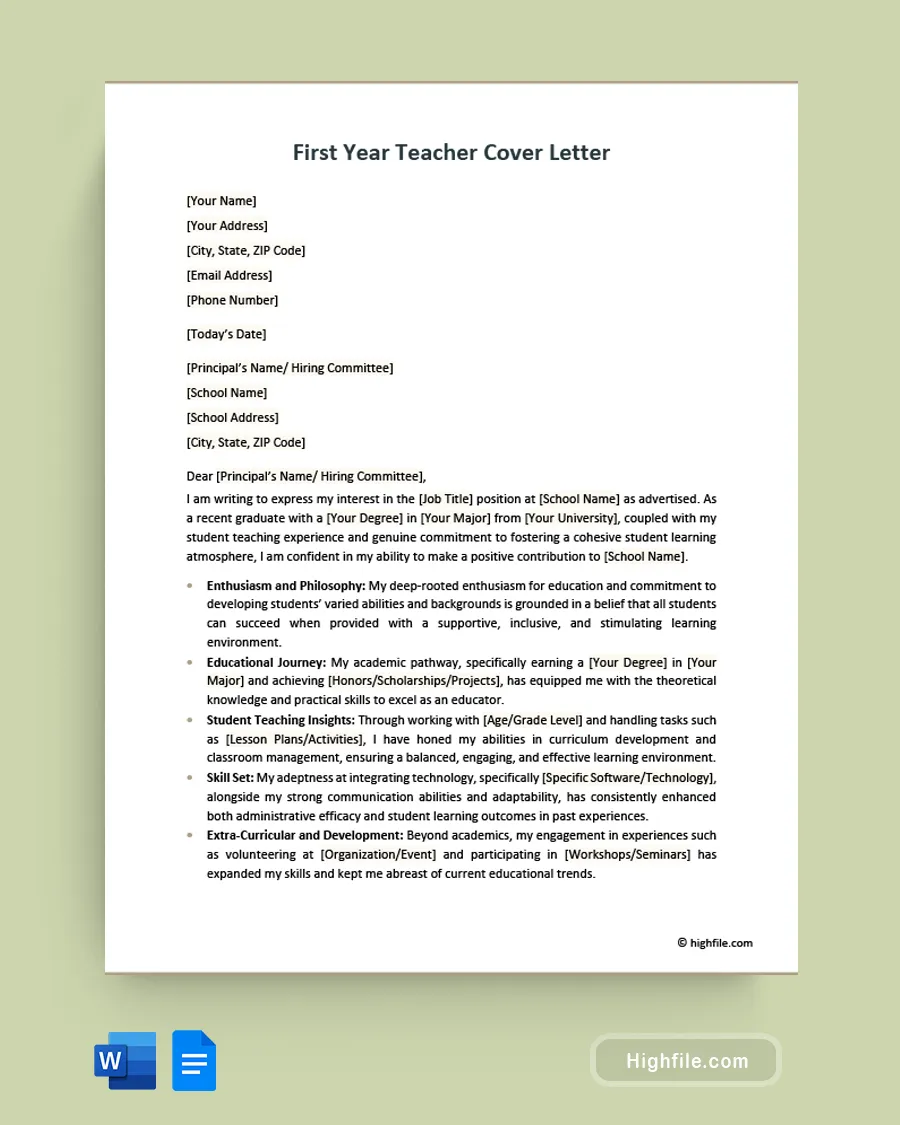
Proofread your cover letter meticulously for any spelling, grammar, and punctuation errors. Errors can undermine your credibility and make you appear unprofessional. Use spell check and grammar check tools, but don’t rely on them entirely. Read your cover letter aloud to catch any awkward phrasing or errors that you might miss when reading silently. Ask a friend, family member, or career counselor to review your cover letter for accuracy and clarity. Errors can be a huge turn-off for hiring managers, so make sure your cover letter is polished and error-free before submitting it. Thorough proofreading is an essential step in the job application process.
Using Action Verbs
Use strong action verbs to describe your accomplishments and responsibilities. This makes your cover letter more dynamic and engaging. Start your sentences with action verbs to make them more impactful. Action verbs paint a picture of your abilities and skills. Examples include “developed,” “implemented,” “managed,” “created,” “collaborated,” “assessed,” and “evaluated.” Action verbs add power and impact to your writing. Avoid passive voice and focus on active voice. Use a variety of action verbs to avoid repetition. Use action verbs to showcase your achievements and demonstrate your effectiveness in the classroom or other relevant settings.
Tailoring Your Cover Letter to the Job
Researching the School and District
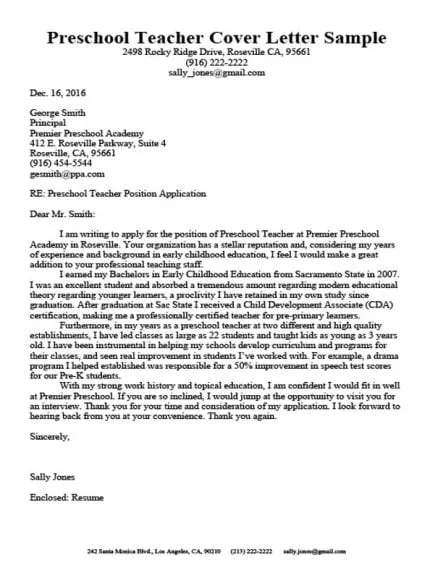
Before writing your cover letter, research the school and district. Visit their website, read their mission statement, and familiarize yourself with their values and goals. Tailor your cover letter to align with the specific needs and priorities of the school. Mention specific programs, initiatives, or teaching methodologies that the school uses. This shows that you have a genuine interest in the school and that you have taken the time to understand their needs. Demonstrating your knowledge of the school shows that you’ve done your homework and have a genuine interest in the role and the school culture. This shows you’re not sending a generic application and demonstrates your interest.
Matching Your Skills to the Job Description
Carefully review the job description and identify the key skills and qualifications that the school is seeking. Highlight your relevant skills and experiences, using specific examples to demonstrate how you meet their requirements. Use the same keywords and phrases that are used in the job description to show that you understand the role. Tailor your cover letter to address the specific needs of the school. Avoid using a generic cover letter and personalize it to fit the role. Show how your skills and experience align with the job requirements. Demonstrate that you have taken the time to understand the school’s needs and that you are a strong match for the position. Be specific and use concrete examples.
Common Mistakes to Avoid
Generic Cover Letters
Avoid sending a generic cover letter that could be used for any job. Tailor your cover letter to each position you apply for, highlighting the skills and experiences that are most relevant to the job description. Generic cover letters show a lack of interest and make it appear that you are not truly invested in the school. Show that you have researched the school and understand their values and goals. Personalize your letter by mentioning specific programs, initiatives, or teaching methodologies that the school uses. Generic cover letters can be easily identified and are often rejected by hiring managers. Customize each cover letter to increase your chances of success.
Typos and Grammatical Errors
Typos and grammatical errors can undermine your credibility and make you appear unprofessional. Proofread your cover letter meticulously for any errors. Use spell check and grammar check tools, but don’t rely on them entirely. Read your cover letter aloud to catch any awkward phrasing or errors that you might miss when reading silently. Ask a friend, family member, or career counselor to review your cover letter for accuracy and clarity. Errors can easily cost you the opportunity to get hired, so be sure to proofread thoroughly before submitting your cover letter. Double-check all details, including the hiring manager’s name and the school’s address.
Overly Formal or Informal Tone
Maintain a professional yet personable tone throughout your cover letter. Avoid being overly formal, which can make you seem stiff and distant. At the same time, avoid being overly informal, which can undermine your credibility. Find the right balance between professionalism and personality. Use a tone that is appropriate for the teaching profession. Be enthusiastic and show your personality, but always maintain a professional demeanor. Ensure your tone reflects your passion for teaching and your genuine interest in the school. A well-balanced tone makes you approachable and shows that you understand professional communication norms.
Final Thoughts and Next Steps
Writing a winning cover letter is an essential step in securing a teaching position as a first-year teacher. By understanding the importance of a cover letter, following the key components, and avoiding common mistakes, you can significantly increase your chances of getting hired. Take the time to tailor your cover letter to each job, highlight your skills and experiences, and demonstrate your passion for teaching. Proofread your letter carefully and present it in a professional manner. The cover letter is your opportunity to showcase your unique qualities and make a strong first impression. By following these guidelines, you can create a cover letter that effectively communicates your qualifications and enthusiasm, leading to an interview and a successful teaching career. Remember, the effort you put into your cover letter can make all the difference. Good luck with your job search!
